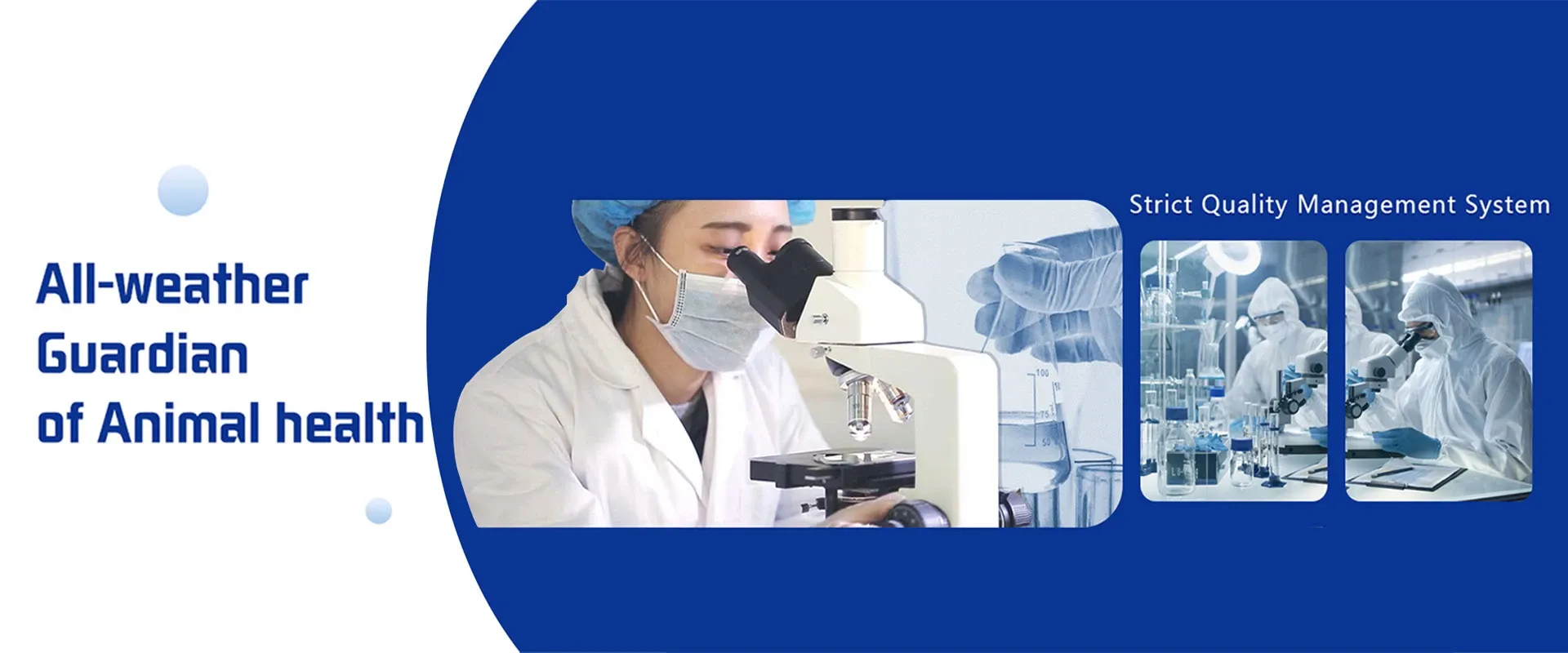Aug . 13, 2024 11:24 Back to list
Understanding the Role of Disinfectants in Veterinary Practices for Animal Health and Hygiene Management
The Role of Disinfectants in Veterinary Practice
Disinfectants play a crucial role in maintaining the health and well-being of animals in veterinary practice. With the increasing concerns over zoonotic diseases, contagious infections, and the overall hygiene of veterinary facilities, effective disinfection strategies have become a fundamental part of animal healthcare. Understanding the importance, types, and proper application of disinfectants can greatly improve the safety and quality of veterinary services.
Importance of Disinfectants
In veterinary settings, animals are often exposed to a variety of pathogens, including bacteria, viruses, fungi, and parasites. These pathogens can proliferate rapidly in environments that are not properly disinfected, leading to outbreaks of diseases that can affect both animal and human health. For instance, diseases such as kennel cough in dogs, feline panleukopenia, and more recently, avian influenza can spread quickly in poorly maintained facilities.
Disinfectants help to mitigate these risks by reducing the microbial load on surfaces, equipment, and instruments. They are essential in preventing nosocomial infections, which can occur in veterinary clinics just as they do in human healthcare settings. Additionally, effective disinfection aids in controlling the spread of diseases amongst animals, thus ensuring a safer environment for both practitioners and clients.
Types of Disinfectants
There is a wide range of disinfectants available for use in veterinary practice, each with unique properties and applications. Some of the most common types include
1. Alcohols - Ethyl and isopropyl alcohol are widely used for disinfecting surfaces and instruments. They are effective against bacteria, fungi, and many viruses, although their efficacy can be reduced in the presence of organic matter.
2. Chlorine Compounds - Sodium hypochlorite (bleach) is a powerful disinfectant that is effective against a broad spectrum of pathogens. However, it is corrosive and must be used with caution, particularly around metal surfaces.
disinfectants in veterinary practice

3. Quaternary Ammonium Compounds - These are commonly used in veterinary clinics due to their broad-spectrum antimicrobial properties and low toxicity. They are effective against bacteria and some viruses but may be less effective against spores.
4. Phenolic Compounds - These disinfectants are effective against bacteria, fungi, and viruses. However, they can be toxic to certain animals, so they must be used carefully.
5. Peracetic Acid and Hydrogen Peroxide - These oxidizing agents are effective disinfectants with a broad spectrum of antimicrobial activity. They are commonly used in both surface disinfection and equipment sterilization.
Proper Application and Best Practices
The effectiveness of disinfectants is heavily influenced by proper application. To achieve optimal results, veterinary professionals should adhere to the following practices
- Clean First Before applying disinfectants, surfaces should be thoroughly cleaned to remove dirt, debris, and organic matter. Disinfectants work best on clean surfaces. - Follow Manufacturer’s Instructions Each disinfectant has specific guidelines regarding dilution, contact time, and surface suitability. Adhering to these recommendations is crucial for effective disinfection. - Regular Monitoring Routine checks and monitoring of disinfection protocols can help ensure their effectiveness and address any gaps in practice.
- Staff Training Ensuring that all staff are trained in the proper use of disinfectants and the importance of infection control will foster a culture of safety within the practice.
Conclusion
In conclusion, the use of disinfectants in veterinary practice is essential for maintaining a safe and healthy environment for both animals and their caretakers. By understanding the different types of disinfectants available and implementing best practices, veterinary professionals can effectively control the spread of infections and ensure the highest standards of veterinary care. As we continue to confront emerging diseases and antimicrobial resistance, the role of effective disinfection will only become more vital in safeguarding animal and public health.
-
Vital Solutions for Healthy and Productive SwineNewsJul.08,2025
-
Veterinary Powder Is VitalNewsJul.08,2025
-
Understanding Prescription Drugs for AnimalsNewsJul.08,2025
-
Understanding Poultry MedicineNewsJul.08,2025
-
The First Line of Defense in Animal HealthNewsJul.08,2025
-
Role of Veterinary Drug in Modern Animal HealthcareNewsJul.08,2025
Products categories







